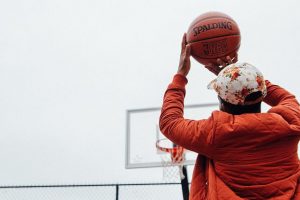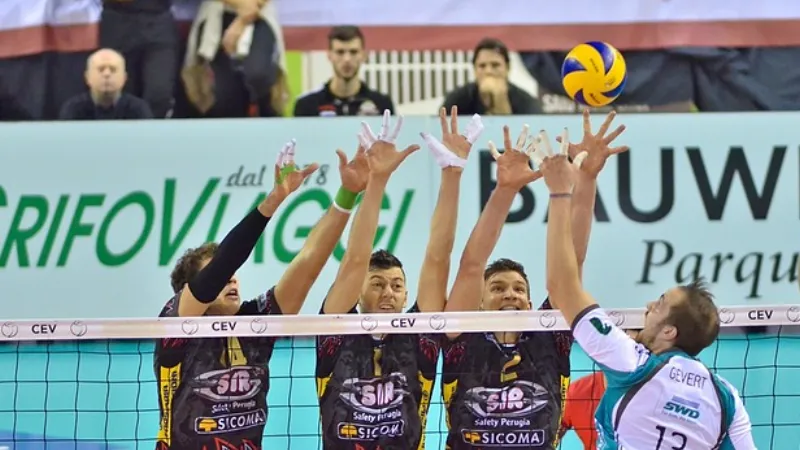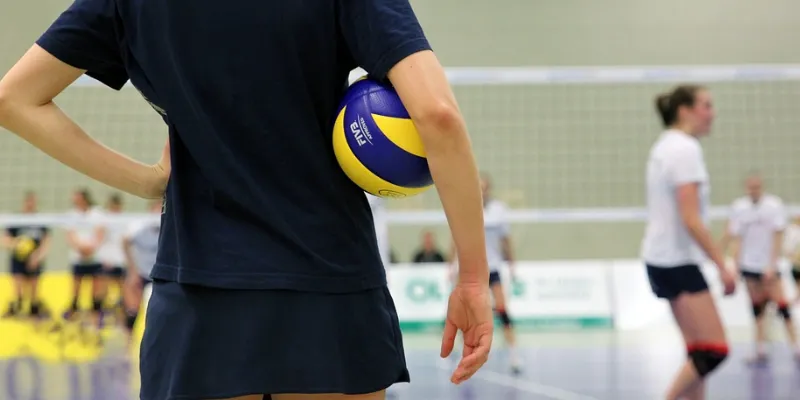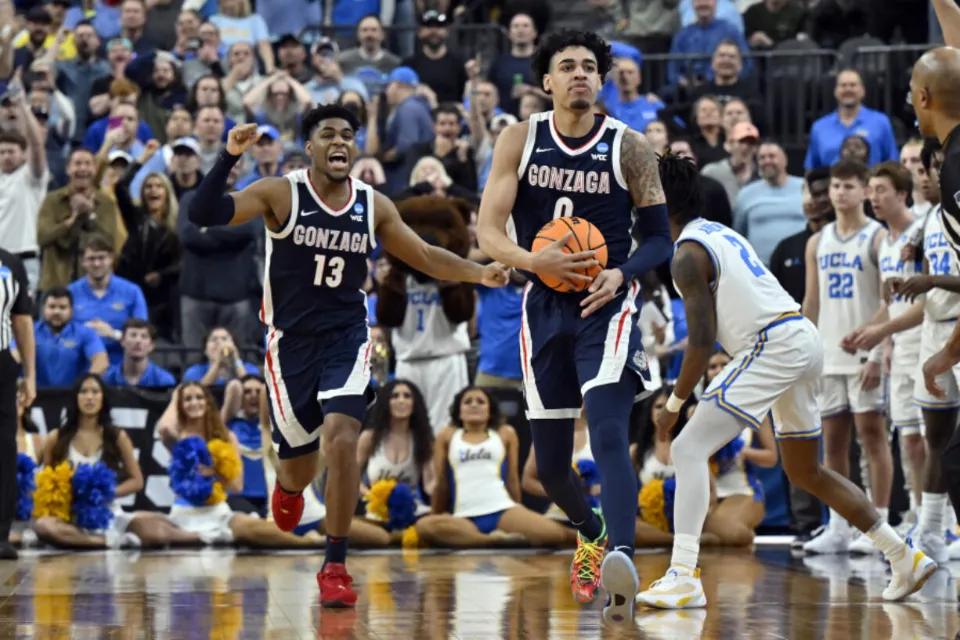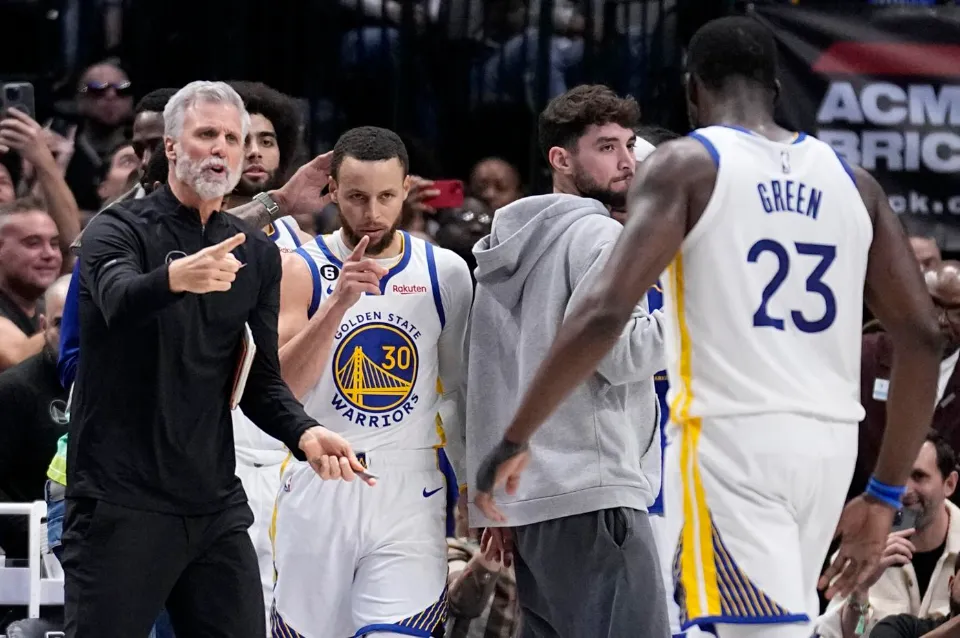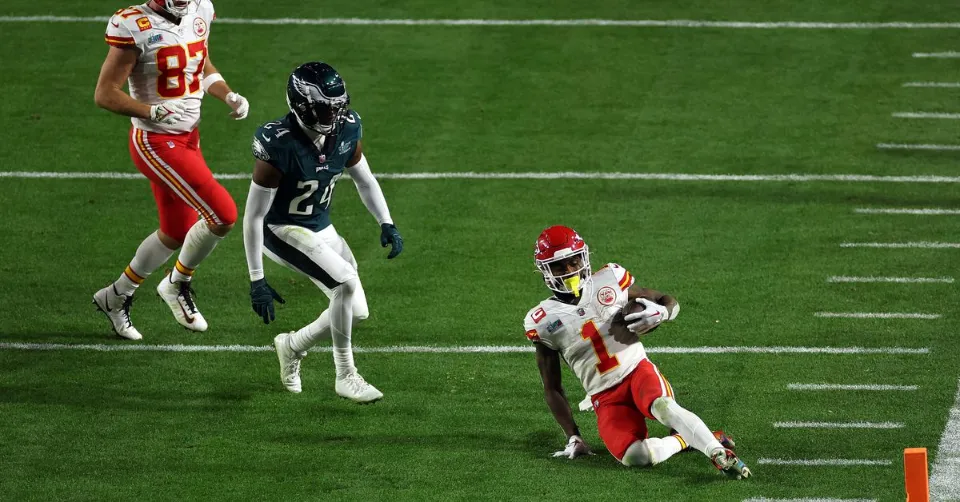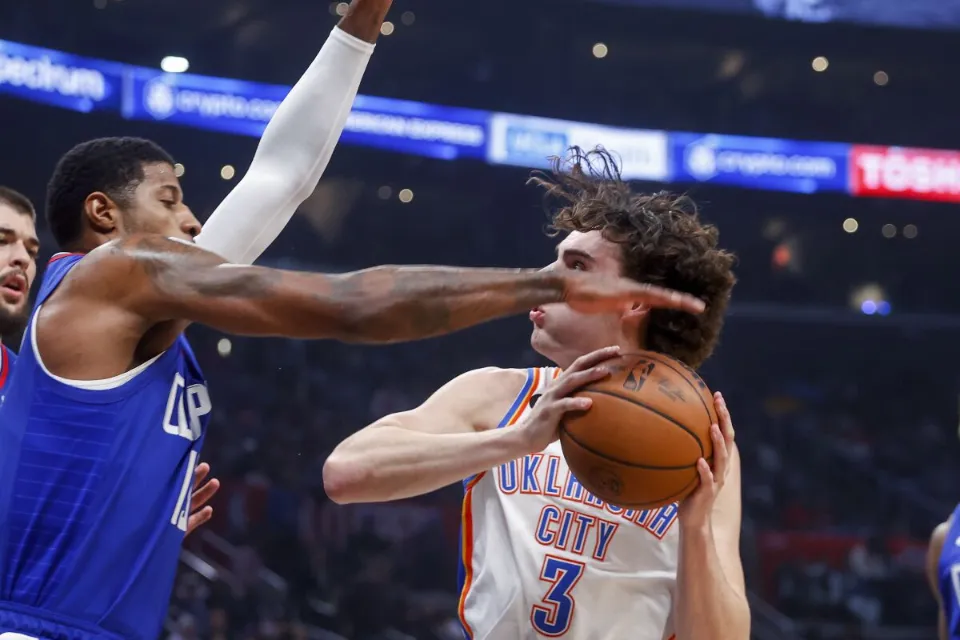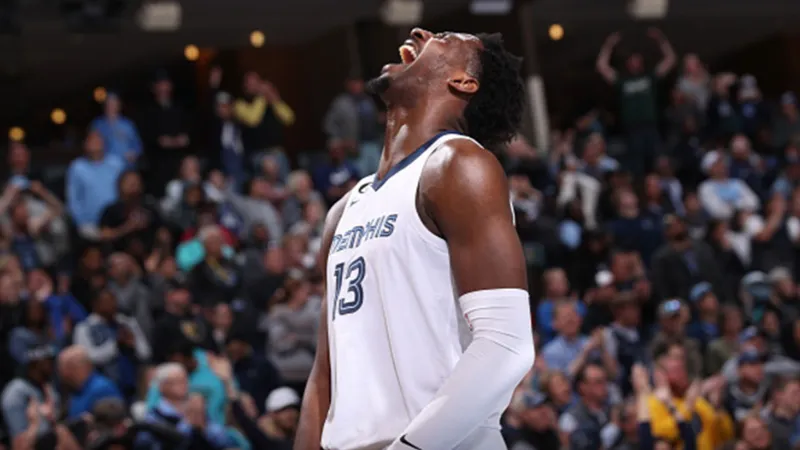What Is Guarding In Basketball: Basic Definition & How To Do
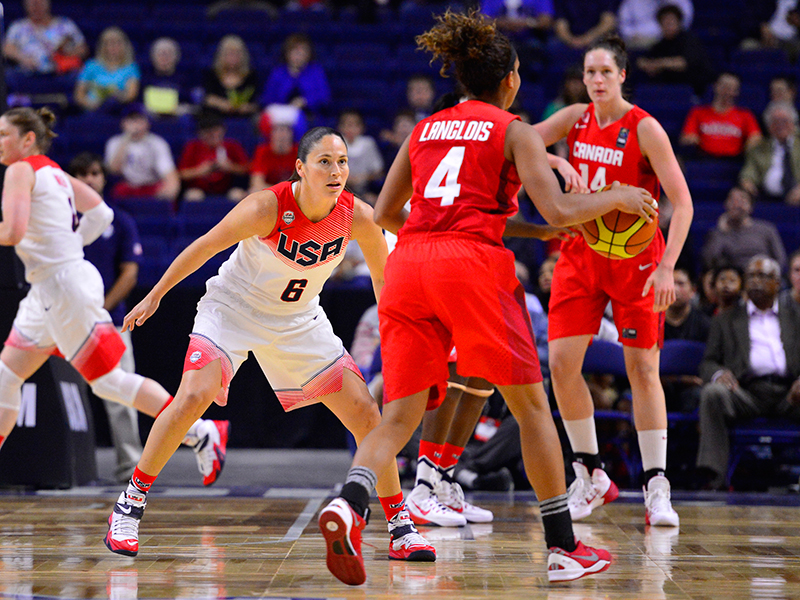
First, what is guarding in basketball?
Putting one’s body in the way of an offensive opponent is known as guarding. Although there is no minimum required, when closely guarded, the maximum distance between the guard and opponent is 6 feet.
If you came to this page looking for a general explanation of basketball guarding, continue reading.
Table of Contents
Legal Guarding In Basketball Position
When one of the defense’s members has taken up a first-time legal guarding position,
- He is facing his opponent, and
- Both of his feet are planted firmly on the ground.
Vertically above him (cylinder), from floor to ceiling, is the permitted guarding position. However, he must keep them vertically positioned inside the fictitious cylinder and may not raise his arms and hands above his head or jump vertically.
Guarding A Player Who Controls The Ball
The concepts of time and distance do not apply when guarding a player who controls (holds or dribbles) the ball. The player with the ball must anticipate being guarded and be ready to halt or change course whenever an opponent takes an initial legal guarding position in front of him, even if this occurs in a split second. The guarding (defensive) player must take his position after establishing an initial legal guarding position without making contact with the opponent. The defensive player may move to guard his opponent after settling into a proper initial guarding position, but he is not permitted to extend his arms, shoulders, hips, or legs to block the dribbler from passing by him. An official must apply the following guidelines when deciding whether to call a charge or block on a player who has the ball:
- The defensive player must first take a legitimate guarding position by facing the ball-carrier and placing both feet firmly on the ground.
- To maintain the initial legal guarding position, the defensive player may stand still, leap vertically, move laterally, or move backward.
- When moving to maintain the initial legal guarding position, one foot or both feet may be lifted briefly off the ground as long as the motion is lateral or backward and not in the direction of the player holding the ball.
- The defensive player would be regarded as having been at the point of contact first if there was contact on the torso.
- The defensive player may turn inside his cylinder after establishing a legitimate guarding position to prevent injury.In any of the aforementioned scenarios, the player who had the ball at the time of the contact is deemed to be at fault.
Guarding A Player Who Does Not Control The Ball
If a basketball player does not have possession of the ball, they are free to move around the playing field and occupy any open positions. The principles of time and distance must be used when guarding a player who does not have possession of the ball. A defensive player cannot move so quickly and/or closely into the path of a moving opponent that the latter has insufficient time or space to stop or change course. If a defensive player does not respect the elements of time and distance when taking his initial legal guarding position and contact with an opponent occurs, he is responsible for the contact. The distance is directly proportional to the opponent’s speed, never less than one (1) normal step. A defensive player may move to guard his opponent once he has taken up an initial legal guarding position. He is not allowed to block his path with his extended arms, shoulders, hips, or legs. He could turn inside his cylinder to protect himself.
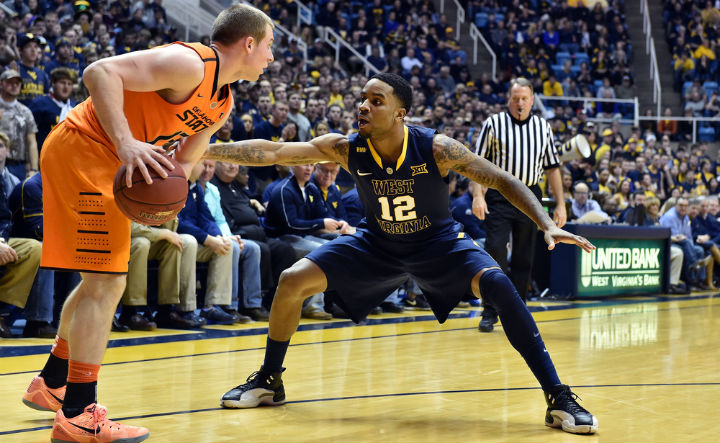
How Guarding In Basketball Coached
Rule 4 Section 23 Guarding
Putting one’s body in the way of an offensive opponent is known as guarding. While there is no minimum required, the maximum distance when closely guarded is 6 feet. Any player who arrives first without inadvertently making contact with an opponent is entitled to a spot on the playing court. If an opponent comes into contact with a player who extends their arm, shoulder, hip, or leg into their path, that player is not deemed to be in a legal position.
Dribble
We are taking action that makes the offensive player uncomfortable. By overplaying the ball on the side of the dribble, we achieve this. As an illustration, if a player were to dribble with their right hand to the right, our defensive player would play with their left foot in the lead and their left right hand positioned in the crossover area. In the opposite direction, the dribble would go the other way. The defensive player would be shown completely overplaying the side on which the dribble is being made. In this position of guarding, we instruct no contact. In order to ensure a closely guarded count and to get as close as possible to the offensive dribbler while avoiding making illegal contact, the acceptable range would be between 6 feet and as close as possible.
Drills: swing, slide, and pressure on the entire court.
While they bring the ball up the floor, defensive players focus on overplaying the dribbler. When the player crosses over and the defensive player swings, slides, and applies pressure once more, they have reached the designated marks on the floor.
Pass:
When a player receives the pass and does not immediately move to the triple-threat position, or as we like to say, is not “in the pocket,” we straddle the pivot foot to prevent the player from driving or shooting. The offensive player will only have one option available to them when we hold the position, which is to charge the defensive player and clear them away. There might be unintentional contact on the player’s straddle during the pass, but our players are taught to play by the officials’ rules and to make adjustments accordingly.
If the pass is intercepted in a good triple threat position, we play an arm’s length away with one hand up in the passing lane, one down in the dribbling area, and forcing to the weak-hand side. To cause a count, it is necessary for our players to be inside the 6-foot-diameter tightly guarded area. This situation does not teach contact. So that a quick shot or pass is not made, we instruct our students to have a hand out in the ball’s natural flow area.
Drills: Cross court pass with a close out.
As a player passes to the player being guarded, other players align themselves to the help-side of the player being guarded. In order to decide whether to straddle or solidly close out, the defensive player uses his or her judgment to assess how the pass is caught. See more about What Is ISO In Basketball?
Rule 4, Section 24 Hands And Arms, Legal And Illegal Use
In accordance with Article 1, when an opponent’s action results in contact, it is acceptable to extend the arms vertically above the shoulders and are not required to do so. When a player throws the ball in, presses the ball carrier, or makes a goal-scoring move by pivoting, jumping, etc., this legal use of the arms and hands usually takes place.
Our players are instructed to play vertically and to try to always show their hands. When the official notices hands up and arms not out blocking the offensive player’s movement, it is extremely difficult for the official to make the call against the defensive player. This is more of our off-the-ball defense. We play with one hand down in the dribbling area while on the ball and with a live dribble available.
Drills:
We use our towel drill, where the defensive player maintains a towel over the neck and in both hands, to hone this skill. As a result, the defensive player cannot restrain the offensive player with hand or arm bars.
We are a hands-free team, which basically means that we don’t touch anything. Hopefully, that is how the game is designed to be played. The calls that are made and the way the game is called at the time are adjusted by our players.
We do instruct our players to use their arms in one circumstance, which is to make room on screens so they can slide the screen. However, if not for the arm bar, we do not stop the offensive player from moving to any position. In order to make room to cross the screen, the defensive player will arm bar the offensive player as they cross it.
Rule 4, Section 26 Holding
Holding is when a person physically touches an opponent and restricts that person’s ability to move freely.
We never hold an opponent against us. This potential opportunity for a holding foul is not coached in any circumstances. Our players are instructed to slide and hold a spot when posting up on the block with their arms raised in order to avoid a potential holding foul.
We offer blocking coaching. In this position, a player has their hands raised and is squatting down. To prepare the area for a pass, the player must move their feet. The offensive player won’t obstruct the defensive player’s movement. When the ball is in passing position, we advise our players to post to hold the position for no more than two to three seconds. Additionally, it lessens the likelihood that the player will commit a personal foul. See more about Basketball Lines On Ball
Rule 4, Section 27 Incidental Contact
Incidental contact is contact with an opponent which is permitted and which does not constitute a foul
We tell our players that incidental contact is exactly what it is: incidental. Our drills are made to get our players ready for this kind of contact. In practice, fouls are not called, but we advise the players to continue playing through them in case the official views the contact as incidental.
We inform our players that officials’ interpretations of this rule may vary based on a variety of human traits and styles. Our players are instructed that a lot happens on the court that the referees won’t or can’t see; this would be incidental. We try to set up scenarios where our players understand how to maintain a position advantage over the opposition rather than teaching them to be aggressive in a way that is intentional contact to abuse circumvent the incidental contact interpretation.
Rule 4, Section 45 Verticality
Legal positions are vertically aligned. The foundational elements of the verticality principle are as follows:
Art. 1: After obtaining a legal guarding position, all subsequent movement must be lawful.
Art. 2 … The defender may rise or jump vertically from this position and occupy the space within his or her vertical plane.
The defender’s hands and arms may be raised within his or her vertical plane whether they are on the ground or in the air, according to Article 3.
In accordance with the verticality rule, we teach our athletes to jump straight up and to keep their entire body moving vertically while landing straight down. Since we believe that our players will only attempt to block a shot during a drive to the basket, we don’t focus much on this in our lessons. The foul usually results from the extension out of the plane. We place a lot of emphasis on the “wood plank” or “2 by 4” concept, in which the defensive player moves straight up and down with his arms in the air like a straight piece of wood.
Rule 4, Section 7 Blocking, Charging
Blocking is prohibited personal contact that prevents an opponent from moving forward, ball in hand or not.
According to Article 2 (hellip), pushing or moving into the torso of an opponent constitutes charging, which is prohibited personal contact.
Our players are taught to recognize that if they are not in a balanced position to force a player one way or the other, they are not in proper position and will be called for a block if they attempt to take a charge.
We practice on examples of what it feels like to take a charge while being out of position to teach this. Your knees should be bent, and your head and feet should be slightly in front of each other. To simulate the block, we put our players in a situation where they are unable to close the distance and take the charge. We as a team value each player’s safety and won’t try to take the charge until the player is confident that the position can be established. A defense is employed to change the shot if the defensive position can’t be established. We also stress the importance of setting up our defense at a distance of 6 to 10 feet (at the very least) from the basket.
Final Words
So, what is guarding in basketball?
What guarding in basketball is all about was the main focus of the article. Please leave a comment if you’d like to know more about guarding in basketball. I’m grateful you read. Have a nice day.
